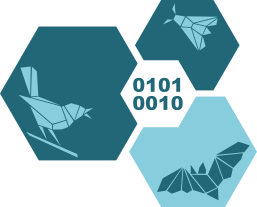What is machine learning?
Machine learning is field of artificial intelligence (AI) that has been gaining in importance for several years. Put simply, machine learning is where computers carry out pattern recognition, based on a training data set.
There are currently many different programming environments (so-called frameworks) available as open-source tools for machine learning. Furthermore, there is a well-connected global community that can offer (multiple) solutions to technical questions. In this way, machine learning has become accessible to an ever larger number of users.
What does OekoFor do?
We make significant use of machine learning to automate the analysis of data generated by our autonomous recording devices (the ecoPi:series). For the implementation of machine learning, we use the framework TensorFlow (Google Brain Team).
Biological questions can be investigated on a completely different scale using automated evaluation routines based on machine learning, as very large amounts of data can be evaluated in a relatively short time. A solid data basis helps to make more well-founded statements and ultimately to make investigations and research even more reliable.
When implementing our recording devices, it is possible (depending on the focus of the research) to adopt existing datasets for training data. This enables automated evaluation to be implemented relatively quickly.
An addition to the training data set, or the generation of a completely new training dataset is naturally associated with a certain level of additional effort. However, the advantage of automated evaluation methods is huge compared to classical data analysis methods regarding the speed of evaluation and the volume of data that can be evaluated.
We are currently using machine learning, mainly for the automated evaluation of acoustic recordings of birds.
For this purpose, a dedicated artificial neuronal network is implemented, it is applied to the recordings and automatically identifies the individual vocalizations of target bird species in each recording.
Examples
Ongoing projects:
-
Wind Energy in Forests
This project investigates whether wind turbines in the forest lead to a change in the use of the forest habitat in certain bird species.
The ecoPi:Bird units we developed enable long-term acoustic monitoring of birds. The automated analysis of data for this project is carried out using machine learning. -
Neeracherried
In this project different species of rails are monitored within a protected area. Using acoustic recordings, we want to clarify which species of rails occur and where the birds reside within the protected area.
In this project we implement the ecoPi:Bird-2D, which we developed to record and localize bird vocalizations. The automated analysis of data gathered for this project is carried out using a machine learning approach.

